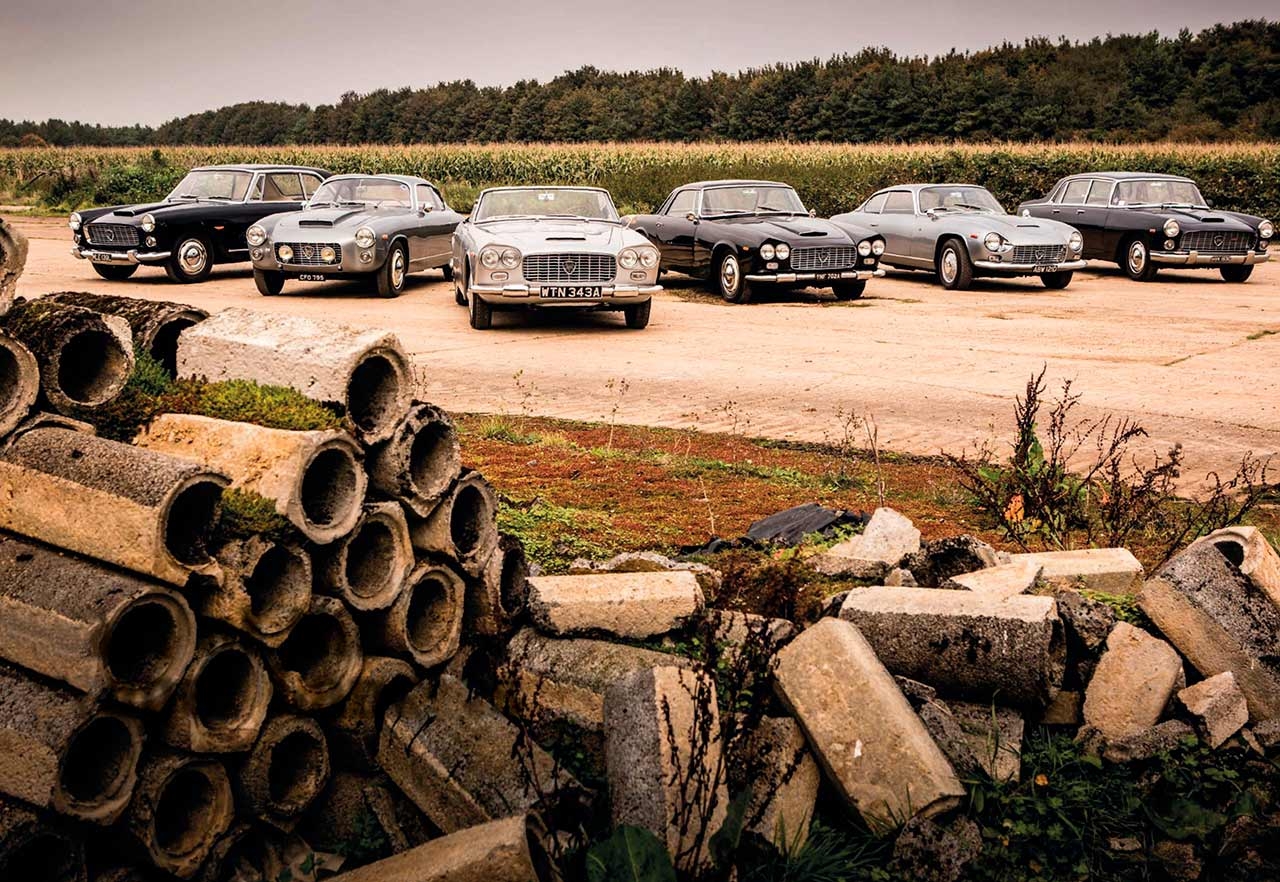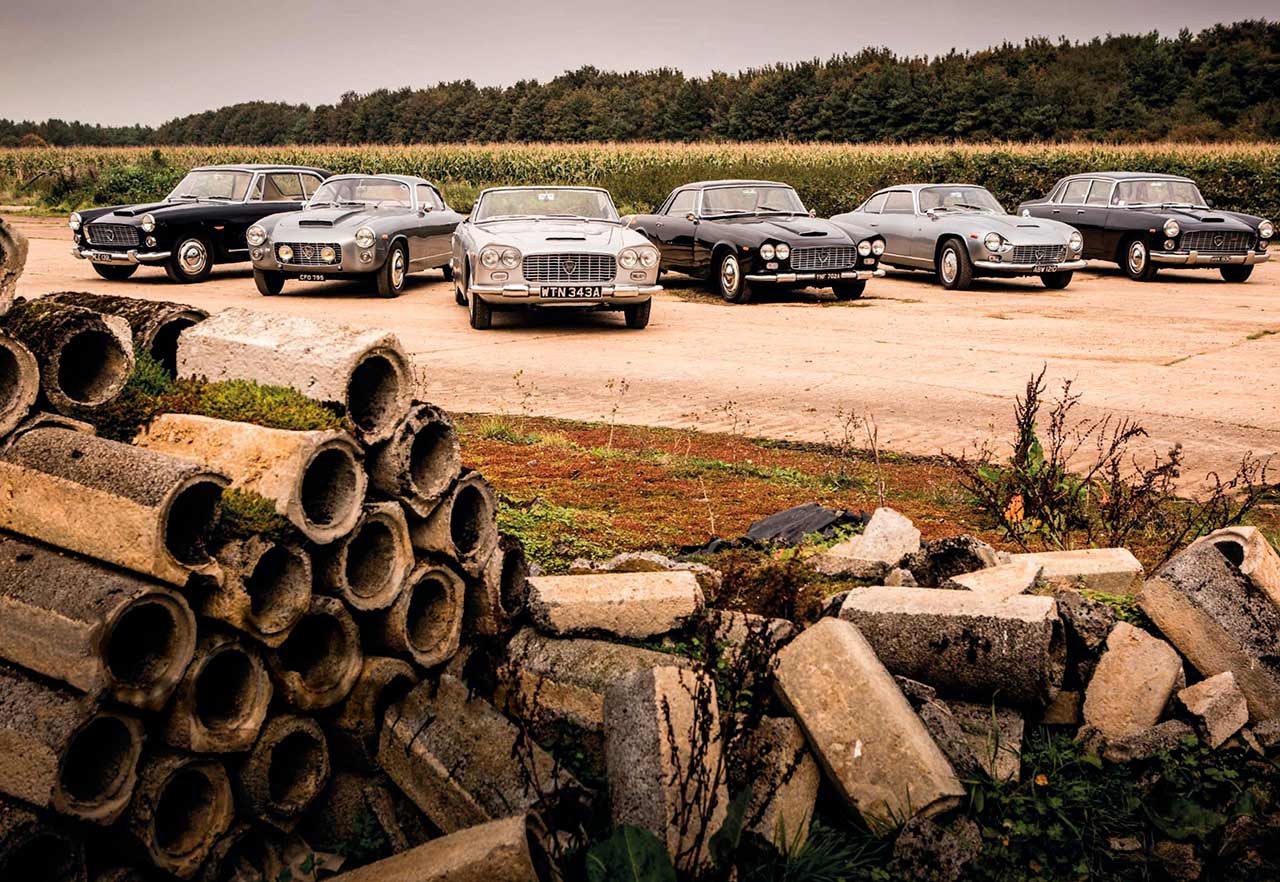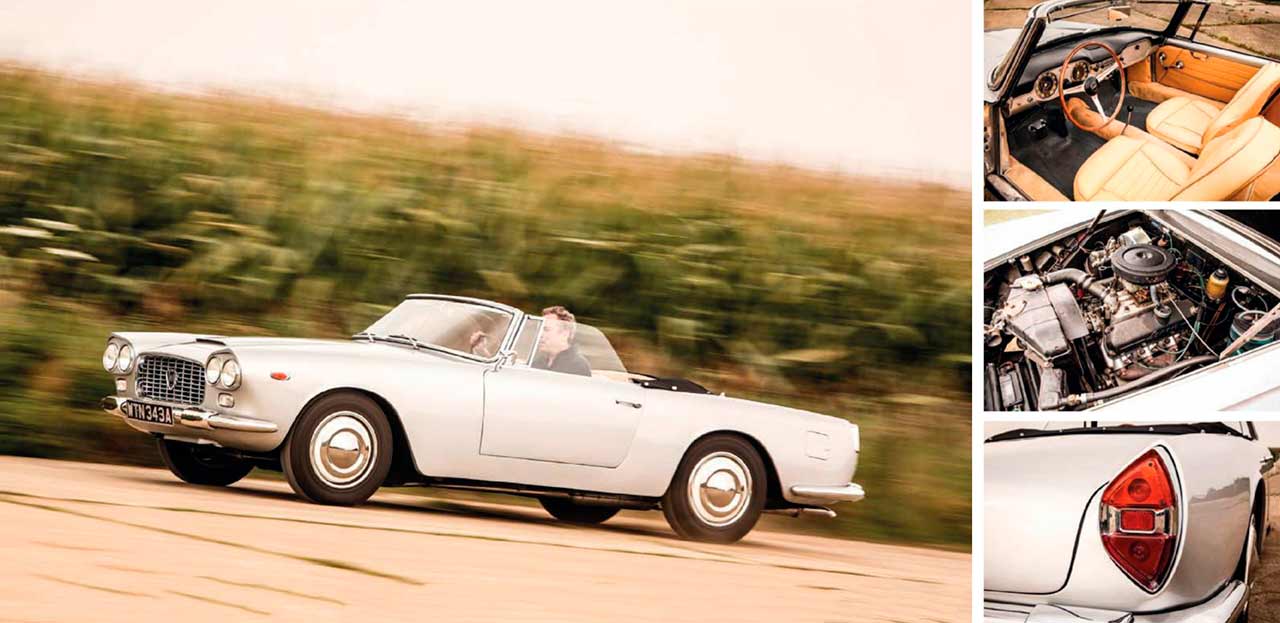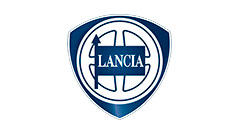
Last of the proper Lancias. Martin Buckley reacquaints himself with the exquisitely engineered Flaminia family, from unassuming Berlina to exotic Super Sport, as it finally emerges from the Aurelia’s shadow Photography Tony Baker.
Lancia Flaminia Family Pride of Turin Buckley’s paen to the underrated, over-engineered Lancia Flaminia…
If the Aurelia was a milestone for the 1950s, then the Flaminia was a headstone for Lancia’s big-car ambitions in the ’60s. Although superficially similar to its illustrious predecessor – and materially better in almost every respect – it somehow failed to capture buyers’ imaginations in the same way in a rapidly changing environment. The Flaminia saloon, or Berlina, was launched with typical understatement at the Geneva Salon in 1957. It was a loss-making model built in absurdly small numbers, seemingly only kept alive for the next 13 years to bolster Lancia’s corporate honour as a maker of luxury saloons and GTs.

Yet, in its heyday, the Flaminia was also a great symbol of Italian pride and La Dolce Vita glamour. It was a car beloved of film stars – Bardot and Mastroianni most famously – and racing drivers. Both Fangio and Peter Collins drove saloons, while Enzo Ferrari apparently committed to print that the GT was ‘the best-handling car available’.
The Flaminia shared only broad concepts rather than nut-and-bolt specifics with the Aurelia. Its larger, 100bhp 2.5-litre V6 was new in detail (and allowed room for further increases in capacity), had a shorter stroke and was smoother with greater torque than before. With more modern cylinder head design and better cooling than Vittorio Jano’s earlier V6, it was balanced by a transaxle that had synchromesh on all four gears.
A de Dion tube was still to be found at the back, but Lancia’s famous sliding-pillar front suspension was banished in favour of unequallength wishbones and coil springs that required less maintenance and were much more refined.
The most striking change of all was the Pininfarina- styled body. Its crisp simplicity seemed to signify the beginning of a new era for Lancia under the leadership of cement tycoon Carlo Pesenti and his recently appointed technical boss Professor Antonio Fessia, author of the Flaminia, as well as the front-drive Flavia and Fulvia.
Elegant and civilised as it was, the Flaminia saloon suffered from the usual Lancia problems. There was too much weight, too much expensive (but unseen) sophistication – connoisseurs of the marque generally agree that the Berlina represented the highest quality standards achieved by Lancia – and not enough power. But if 100bhp to push along 3600lb was never going to make the early four-door a road burner, a solid 130mph from the last of the Zagato-bodied cars was respectable at the very least.
In the face of opposition from the likes of Mercedes, Jaguar and any number of American cars, the Flaminia looked slow and expensive. The subtleties of its magnificent build quality, plus exemplary ride and handling, were lost on a generation of motorists who wanted effortless power and servo-assisted luxury in their prestige saloons and grand touring cars.
The Flaminia was born of a different world, of a more patrician attitude that was curiously at odds with the boxy modernism of that prophetic ‘three box’ body developed from Farina’s Florida show cars. It was the product of a mindset that was still convinced that traditional Lancia customers would always pay a premium for the best, yet which failed to recognise changes in consumers’ tastes and expectations.
Curiously, the Flaminia’s uncompromisingly purist approach sat more easily in the coachbuilt two-door variants that the Berlina spawned. Somehow the idea of an all-alloy V6 linked to an exotic transaxle for 50:50 weight distribution seemed to find a more natural home in the Flaminia GT and Sport by Touring and Zagato.
In fact, the concept almost hit its commercial stride with the introduction of the two-door, mostly steel-bodied Coupé by Pininfarina that was by far the most successful version. Between 1959 and ’67, the handsome, practical Farina Coupé sold to the tune of 5284 cars, outselling the factory saloon by 1341 units.
Doubtless there are still a few others tucked away, but Nick Heywood Waddington’s Berlina appears to be the only running, road-legal example in the UK. It is a ’1965 car with the 2.8-litre engine, which means 125bhp and 110mph, and is one of just 599 2.8s built from 1963 onwards.
The first-series cars, with drum brakes and those bizarre quad rear screen wipers, accounted for the majority of saloon sales at 2695. Interest in the four-door dissipated with the introduction of the Pininfarina Coupé in 1959, which is why the second-generation 2.5-litre Berlinas (with disc brakes and 110bhp) are so rare with just 549 made from 1961-’1963. With a price-tag almost in the Silver Cloud class, few right-handed saloons were sold in the UK. Heywood Waddington’s left-hand-drive example was sourced in Italy a few years ago. Its dignified combination of dark blue body and handsome grey cloth seats is typical of a model that was quite likely to be have been sold new as an Italian ministerial vehicle.
Something about its driving position and big steering wheel gives the Berlina a formal flavour, so to drive solo somehow doesn’t feel quite right. It has such a sense of occasion that anything less than a minor state event seems beneath its dignity, although the surprisingly tight rear knee room suggests that it’s not a masterpiece of packaging.
Inside, it has that peculiarly Lancia smell that is a potent mix of fermenting glues and plastics plus, no doubt, the grey rubber mats on the floor. There are no rear-screen wipers on this one but, like all Berlinas, it has the delightful vacuumoperated rear quarterlights – worked via chromed buttons to the left of the steering wheel.
To a certain extent, the refinement and flexibility of its pushrod V6 make up for the lack of raw urge. It is designed to be driven smoothly and well with a lively, versatile third in the firmly precise ’box. In that gear the Flaminia will potter in traffic right down to 10mph, or accelerate seamlessly up to 70 without drawing breath (testimony to the rightness of the single-carburettor set-up), pulling silkily to 5500rpm.
The column change is such a pleasure to use that you wouldn’t really want an automatic Flaminia – nor probably one of the 48 clutchless Saxomat semi-autos, intriguing though they sound. And while you can see how good power steering might have given it an extra dimension of low-speed agility, there is something satisfying about the mechanical fluidity of the helm once under way that assistance might spoil. The Berlina feels hefty and solid, but does not wallow or float. It rides with a light touch on its tall, skinny Michelin X tyres and has precise, slopfree steering with neutral characteristics that belie its four-plus turns between locks. Its brisk, cultivated character proves remarkably consistent throughout the sportier variants.
There is surprisingly little to choose between Charles Frodham’s 2.5 3B Coupé (one of 232 right-hooker Pininfarina two-doors) and the Berlina in terms of driver appeal. It just feels like a slightly more compact ‘personal’ car that you could picture yourself using reasonably regularly.
A little firmer in its ride, the biggest difference lies with the floor-mounted gearlever – it has a lighter, handier action – and the lustier feel of the V6, which is equally flexible and expensively sweet in voice, yet has a lovely band of mid-range thrust between 3500 and 4500rpm.
The first 3200 Pininfarina-built cars had a 119bhp single-carburettor engine with a sport camshaft: 3B indicates the triple-choke Solex that was standard on the coupés from 1962. The later 2.8 3Bs had 136bhp and could be specified with electric windows. Farina pioneered a catch on the seatbacks that releases when the doors are opened and, with the cut-outs for rear passengers’ knees, it is quite roomy enough in the back.
It is really a two-door saloon in character. The fawn leather interior is pleasingly original – in both look and smell – and features the same dinner-plate-sized Jaeger instruments, large serrated-edge wheel and anonymous twist/ pull switchgear to be found right across the Flaminia family. Frodham loves the car: he can drive it comfortably despite his height (6ft 5in) and recently demonstrated his commitment to it by lashing out on a superb bare-metal respray.
Touring of Milan built its aluminium-bodied Flaminias in three distinct variants between 1959 and ’1965. The single-carburettor GT was followed by a Convertible in 1960, and both were uprated to 140bhp, triple-Weber 3C specification in 1961. The 2.8 3Cs took over in ’1963 and were supplemented by a new 2+2 version called the GTL with a taller roofline, front-hinged bonnet, longer doors and more substantial seats. With 300 produced, it’s the rarest of the Touring Flaminias and the only one missing from our set.
The Convertible owned by Justin Fish is an early single-carb example, while Ryk Heuff’s black GT is a 2.8 3C. They are both left-handed: records show that, out of 2750 Touring bodies on Flaminia chassis, only 21 were right-hookers. These two are, perhaps, the most conventionally attractive of the line-up, with fine shutlines, squat windscreens, jewel-like rear lights (very expensive) and a slim profile that emphasises the big cream steel wheels, although not everyone is a fan of the aggressively angular surrounds for the quad headlamps. Where there is a strong whiff of St Tropez glamour about the Convertible (which makes it the next best thing to an Aurelia Spider) the low, masculine profile of the GT suggests a purposeful dash across Europe. Inside, the armchair seats of the Coupé and Berlina give way to skimpy, low-slung perches and a big, manly wood-rimmed steering wheel.
The fascia is a slash of body-coloured aluminium, with matching nacelles for instruments and glovebox that must have made a right-hand conversion theoretically straightforward. There is no centre console or transmission hump, just a slim propshaft tunnel then a small lump to accommodate the clutch end of the transaxle.
Under way, there is a fascination to driving the GT and Convertible with their strong, progressive brakes, flat cornering and unerringly civilised ride that somehow goes beyond the primitive lust for raw urge. There is a deep and fruity warble from the triple Webers in the fixed-head 3C (they really do make a difference when properly set up), but both cars are gentlemanly brisk rather than aggressively fast – which is not the same as saying that they are slow.
While they accounted for fewer sales (526), the Sports and Super Sports have a much more complicated production history that seems to highlight the marginal existence of the Flaminia within the increasingly chaotic Lancia empire of the 1960s. Compared to the more commercially important Flavia and Fulvia, the model had become a bit of a distraction.
The first 99 Flaminia Sports had faired-in headlights and the 119bhp engine, and would do a claimed 112mph. From 1960, another 100 single-carb cars were built with exposed lights until the introduction of the Sport 3C with the 140bhp triple-Weber unit. Zagato made 174 of those in 1962 and ’1963, still with the exposed lights that sat nearly flush with the grille. A further 70 were built with the 2.8-litre 146bhp 3C engine, although the production figures are clouded by the fact that many earlier cars were upgraded with later 3C V6s. The faired-in lamps made a return on the Super Sport (1964-’1967, 150 produced) with a Kamm tail and DCN Webers with 40mm chokes, boosting power to 150bhp.
James Henderson’s 1963 Sport has been fully rebuilt by Thornley Kelham and fitted with a 2.8 Super Sport engine. Peter Blenk has owned his ’1966 Super Sport for 15 years, and it shares his affections with an Aprilia restoration project. These Zagato-bodied cars are flowing swathes of purposefully fashioned aluminium sheet, with hunched double-bubble tops, minimal brightwork, elegantly sketchy leather trim and sensuous views along well-muscled bonnets.
Inside and out, they have the feel of bespoke jewellery and, more than the other Flaminias, you ‘wear’ them rather than simply sit in them. There is an acute awareness of their extremities and a seat of the pants/tips of the fingers connection to the way they steer and stop that gives the Sport and Super Sport an additional edge of excitement, although they are far from being lairy. They are smooth and flexible, with the same easy, direct action to that disembodied piece of bent tube that forms the gearlever.
Wound out through the ratios, they accelerate with a measured aggression that keeps things interesting. Their noses do not plough on but simply go where your light touch directs them, with no views on the matter one way or the other. If you do run out of grip, it’s the tail that goes first but, because you are so finely balanced between engine and ’box in a legs-outstretched position, any such intention is as calmly telegraphed as it is easily resolved.
Total Flaminia production was fewer than 13,000 cars by the time that Fiat’s (no doubt horrified) accountants killed it off in 1970. Now, after decades in the shadow of the Aurelia, interest is picking up – as are prices. Actually, the Zagatos have been big money for quite a while, with £300,000 or more routinely being asked.
Even a Touring-bodied GT can be a hundredgrand car, and you can add another £50-80k on top of that for the Convertibles. As you’d expect, the bargains lie among the Berlinas and Pininfarina Coupés, the best of which rarely make £30,000. Of these steel-bodied cars – and, to a lesser extent, the Touring GTs – there are still plenty of projects for brave masochists. I’d love to own any of them. A full set would be even better, but strangely (or perhaps not) it’s the saloon and the Pininfarina Coupé that have the most attraction for me.
Thanks to Thornley Kelham for sourcing the cars. The Convertible and Zagato 3C are currently for sale: 01285 869791; www.thornleykelham.com






‘THE STRONG BRAKES, FLAT CORNERING AND UNERRINGLY CIVILISED RIDE GO BEYOND THE PRIMITIVE LUST FOR RAW URGE’
Experts’ view – Thornley Kelham on owning and restoring
Thornley Kelham is probably the nearest thing you will find to a Flaminia specialist in the UK, although founders Simon Thornley and Wayne Kelham acknowledge that it would not make commercial sense to devote themselves to such a rarefied model (or even Lancia in general).
“If you get somebody into a Flaminia, they cannot believe that it’s 50 or 60 years old,” says Thornley. “Unlike most cars of that age, they actually go around corners. Mechanically, they are more robust than an Aurelia: the transaxle is stronger, the clutch is better, everything is heavier. They are hugely over-engineered.”
Bodywork, at least on the aluminium variants, did not aspire to the same high standards: “On the Zagatos and Tourings, we still marvel at how bad some of the welding is – but it’s the same as Ferrari and all those other Italian cars of the period. Nobody intended them to last this long. It’s the most expensive part of any restoration.”
“There is an enormous amount of trim on a Pininfarina Coupé,” says Kelham, “so much so that you wonder how they thought they were going to make money.” Not that many PF Coupés have had the full treatment; as with saloons, the end value doesn’t justify it. Both men acknowledge that there are lots of Flaminias that they are never going to see because the numbers don’t add up.
As Thornley points out, you can spend more than 1000 hours on the body of a Convertible or GT: “The trouble is, you are into six figures to sort the corrosion on a Touring, but what is the most that anyone is going to pay for one? They should be £250-350k, but people baulk at that – yet an Aston DB4 convertible is 800 grand! They were equally pricey new, but the perception today is that Flaminias shouldn’t be expensive simply because they have been cheap for 50 years. That’s why you don’t see many really good ones: it’s expensive to get to our level of detail.”
Prices are all over the place, but even now it’s rare to be able to buy one and restore it without losing money, except maybe the Zagatos. “There are quite a lot of Tourings for sale,” says Thornley, “but not many people can send you pictures of them being bare-metalled.” Kelham is not sure that Flaminias will ever catch up with prices of the more obvious exotica: “They just aren’t fast in a straight line. A ’60s Aston is still quite quick; the Lancia isn’t, and people don’t always get the appeal.” Are they too subtle? “I don’t like the term,” says Thornley, “but they are connoisseur cars.”
Flaminias are mechanically rugged but not without issues. Brake servos are a perennial problem and TK has put a lot of effort into getting the set-up right on the 3Cs. “The single carbs are easy,” says Thornley, “but the triple 40s on the Super Sports in particular can catch fire. With a return line, Maserati-type needle floats and a few other mods, we can stop the fuel percolating down and igniting on the ends of the valves.
“We have fitted extra fans to reduce heat and spent a lot of time porting cylinder heads so the engine doesn’t run on and is easier to start from hot. In fairness, most of the problem is down to modern fuel: it just evaporates so quickly.”
“The V6 is really durable,” says Kelham, “but it’s surprising how many were changed within the first 10 years. Some people get very worked up about it, but we think it’s just part of the history.” The transaxle is also robust, but TK routinely rebuilds them, which soaks up 80-90 hours.
“The parts situation is probably easier than it was 20 years ago,” believes Kelham, “but the prices have rocketed. Service items are easy, but body-wise, apart from floorpans and some structural pieces, you have to make everything.”






